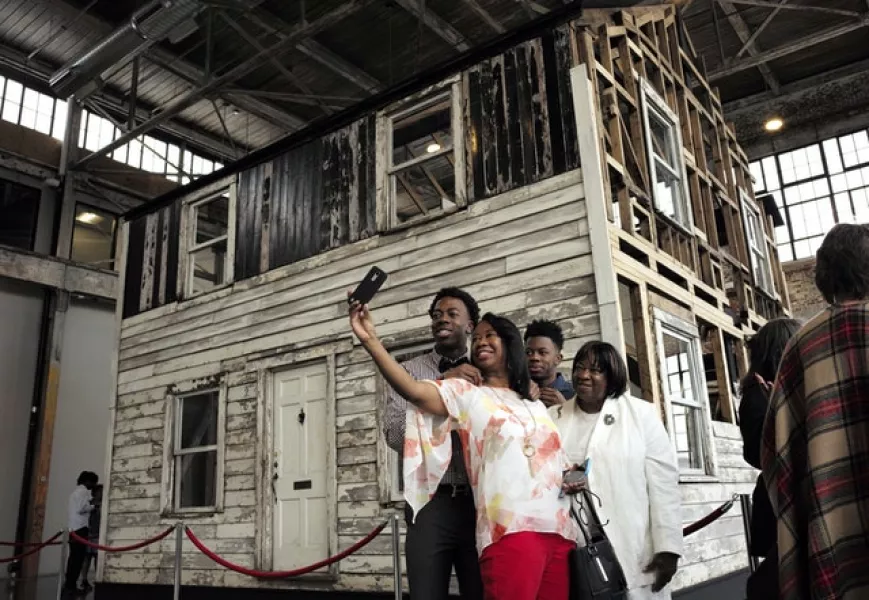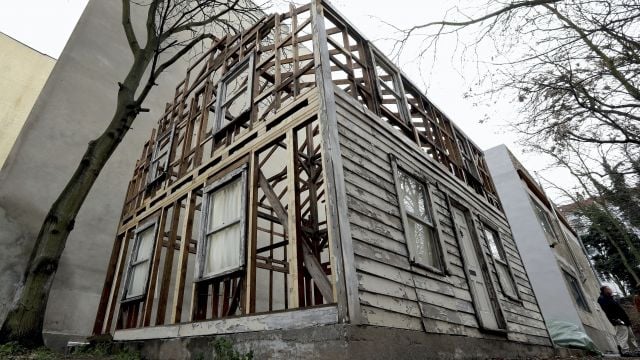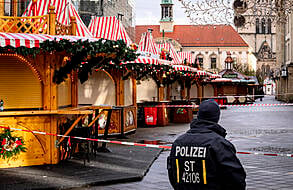The setting could not be more incongruous – the imposing central courtyard of the Royal Palace in Naples.
It is the latest stop for the house in a years-long saga that began when Parks’ niece saved the tiny two-storey home from demolition in Detroit after the 2008 financial crisis.
She donated it to an American artist who rebuilt it for public display in Germany, and now Italy, after failing to find a permanent resting place for it in the US.
As racial tensions seethe in the US, the exhibition of the home has taken on fresh relevance.

The display is being accompanied by a repeating soundtrack entitled “8:46” which lasts eight minutes and 46 seconds.
It is the time it took for a black man, George Floyd, to be killed by white police officers in the US in May that has fuelled the Black Lives Matter movement and protests around the world.
Artist Ryan Mendoza has been campaigning for more than five years to draw attention to the historic value of the home, where Parks lived for a short time after her 1955 defining act of defiance: refusing to give up her seat on a bus to a white passenger in Montgomery, Alabama.
The year-long refusal of African Americans to use city buses that followed is regarded as the first major US demonstration against segregation.
In an interview ahead of the opening on Tuesday, Mr Mendoza said he hoped the grandeur of the Naples debut of Almost Home would draw attention to Parks’ legacy and help America “remember a house it didn’t know it had forgotten”.
📌#savethedate
Vi aspettiamo martedì #15settembre alle ore 18 per l'inaugurazione di #AlmostHome, l'emozionante installazione dell'artista Ryan Mendoza che ha ricostruito a Napoli la casa di #RosaParks. #palazzorealenapoli #drmcampania #museitaliani
ℹ️👉🏻https://t.co/vMF87snGRd pic.twitter.com/c6PDVmD7IU— PalazzoRealeNapoli (@PalazzoRealeNap) September 14, 2020
Parks lived in the tiny house in Detroit with her brother and his family as she struggled to make a new life for herself in the northern US after receiving death threats following the bus protest.
The family says Parks, who died in 2005, lived there with 17 other relatives.
The house was abandoned and was listed for demolition after the financial crisis in 2008 and Detroit’s dramatic decline, but Parks’ niece, Rhea McCauley, bought it from the city for 500 dollars (£388) and donated it to Mr Mendoza.
After unsuccessful efforts to persuade the city to help save the building, Mr Mendoza in 2016 dismantled it and moved it to Berlin, rebuilding it at his studio for public display.
For Mr Mendoza, the house epitomises the experience of many African Americans who migrated north in the first half of the last century, only to face redlining and other discrimination that has affected generations of black Americans.
“This house, in a word, is a way for people to understand why people in America are so enraged,” he said.
He takes particular satisfaction that the house, which is “so fragile that you can almost blow it over”, is being exhibited in the central courtyard of a royal palace, where it is unlikely to have been welcomed by the kings of the House of Bourbon.
But now, “instead of being rejected by the walls of the royal palace, it’s embraced and protected by these walls”, he said. “Potentially thanks to the showing of the house in this way, America will allow the house to have a home.”







